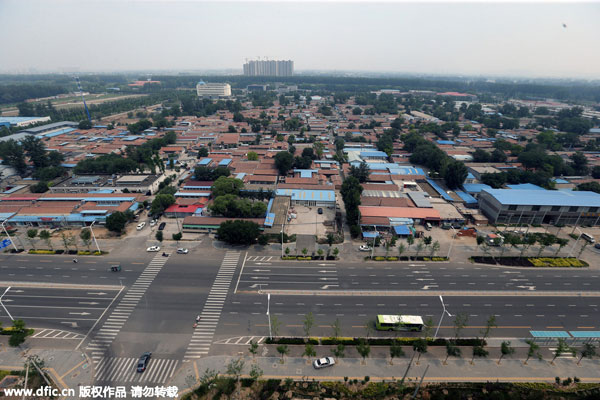An administrative shift for the better
By Xuan Xiaowei (China Daily) Updated: 2016-03-22 07:48
 |
|
Lucheng town in Tongzhou where Beijing will relocate municipal administrative bodies. [Photo/IC] |
Beijing is expected to make substantial progress by 2017 in transferring its departments in charge of political and cultural functions to Tongzhou district, its new "subsidiary administrative center".
Along with the municipal government, the Beijing municipal committee of the Communist Party of China, the people's congress of Beijing, the Beijing municipal committee of the Chinese People's Political Consultative Conference, and about 400,000 State employees are expected to be relocated to the city's Tongzhou district. Li Shixiang, vice-mayor of Beijing, released the relocation timetable earlier this month.
As Beijing's non-capital functions will be relocated to the new administrative center, in order to rid it of the "urban disease", the move is being closely watched by observers. Of course, the shift has been necessitated for certain reasons.
Governments at all levels basically adopt a top-down approach while dealing with official affairs. In other words, China's central government does not need as many civil servants as other countries do: officials at the central level in the country account for only 6 percent of all public servants, compared with the global average of about 33 percent. Likewise, the relocation of local government offices involves only high-ranking officials, not lower-level officials who interact directly with the public.
To stimulate economic growth and increase their revenue, local governments often compete with each other to attract investments for local industries, leading to frequent inflow and outflow of people. In this regard, if government offices are relocated to a new place, it is likely to boost local growth, for instance, by creating more opportunities for land development and construction and thus attracting more business.
- Beijing government to move to Tongzhou at end of 2017
- Tongzhou district nets praise for e-commerce plan
- Tongzhou population to be capped at 2 million
- Govt move to Tongzhou set for 2017
- Tongzhou to be 2nd center to ease pressure
- Tongzhou realtors feel the heat
- Don't transfer urban diseases to Tongzhou
- Relocating to Tongzhou seen as wise
- Rumors fail to lift home prices in Tongzhou area

I’ve lived in China for quite a considerable time including my graduate school years, travelled and worked in a few cities and still choose my destination taking into consideration the density of smog or PM2.5 particulate matter in the region.











